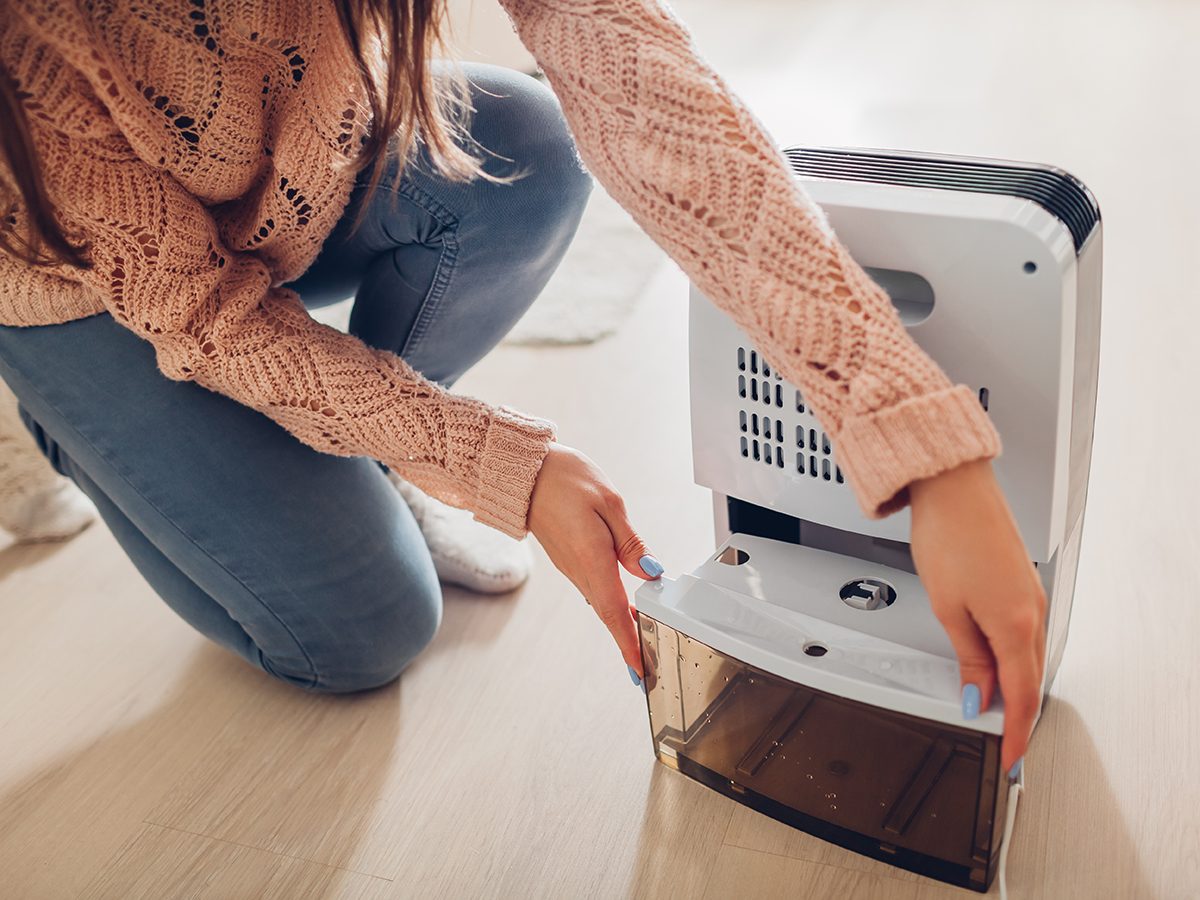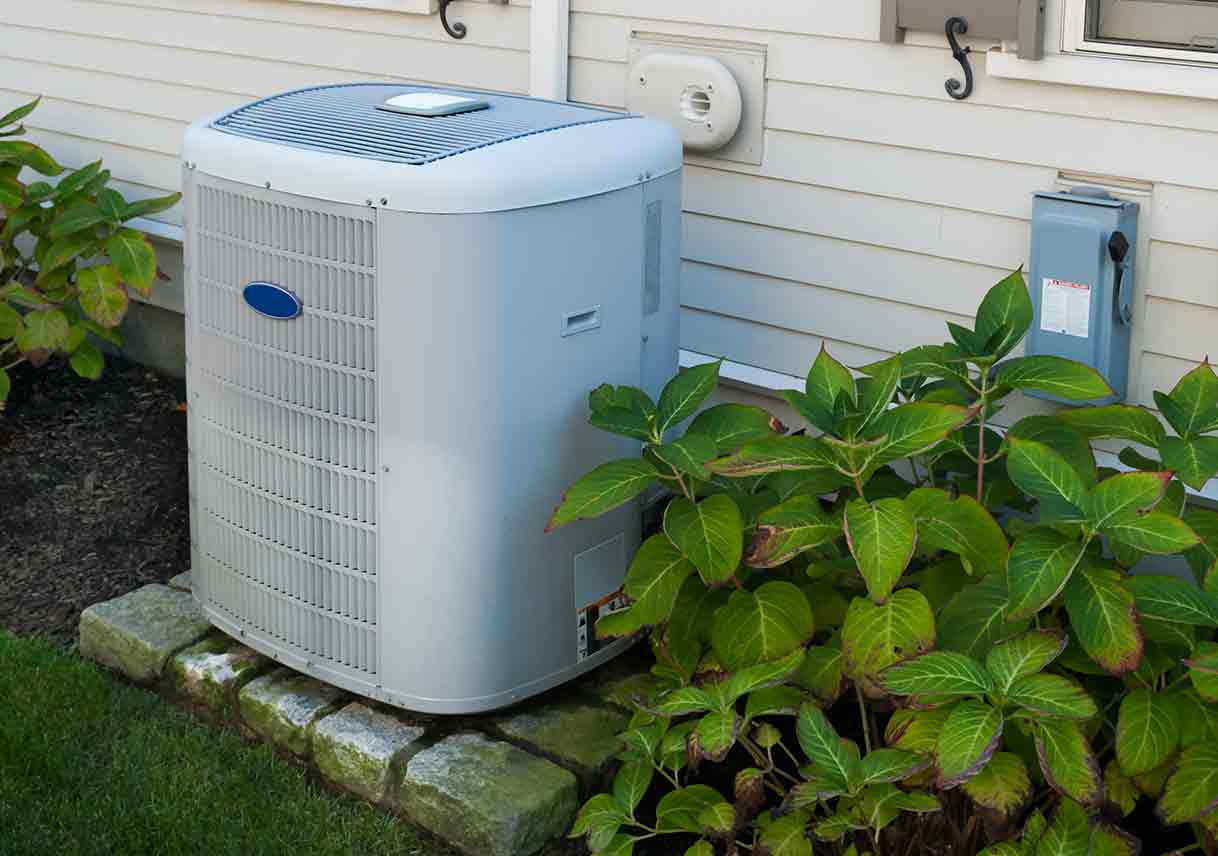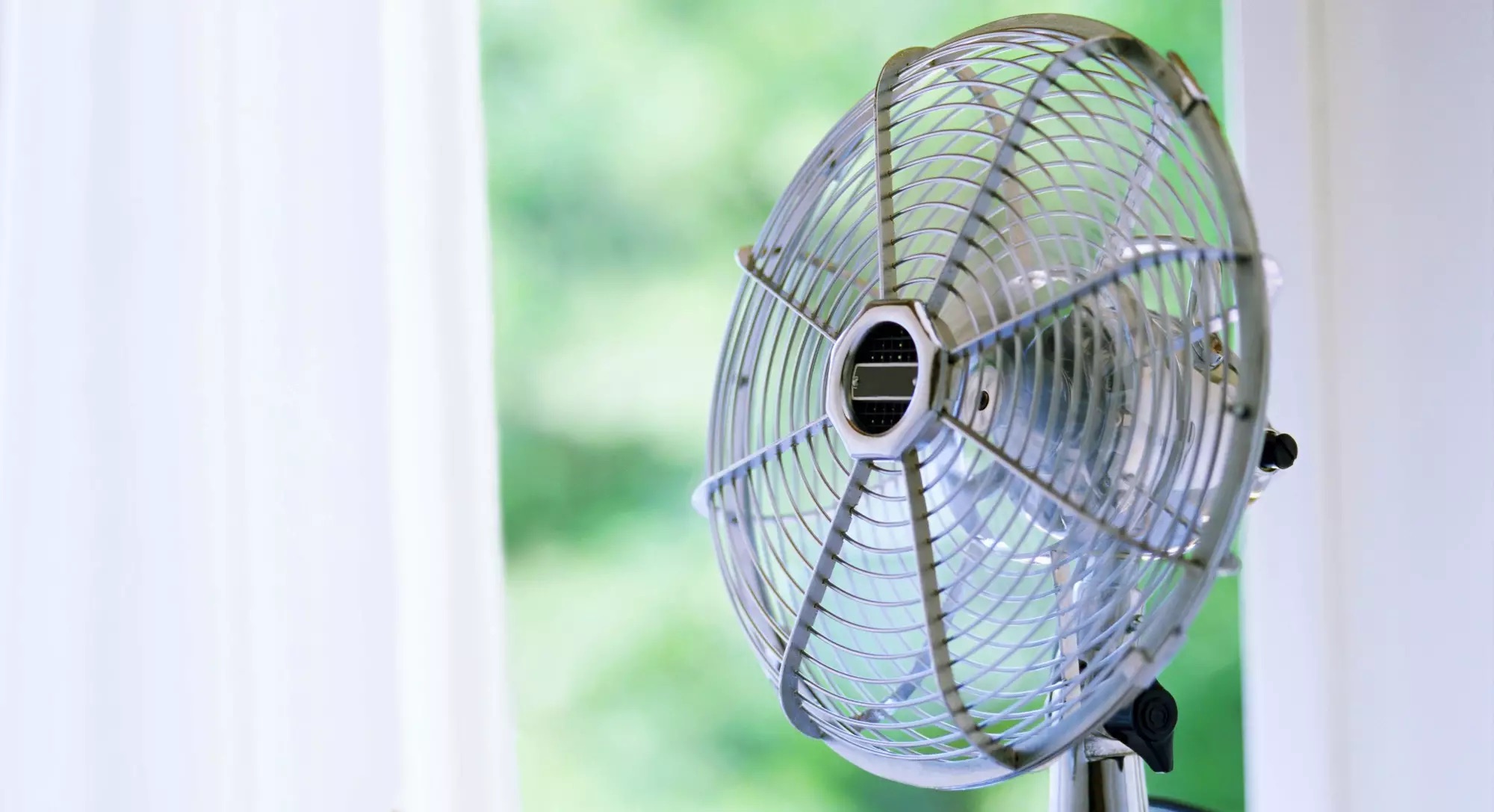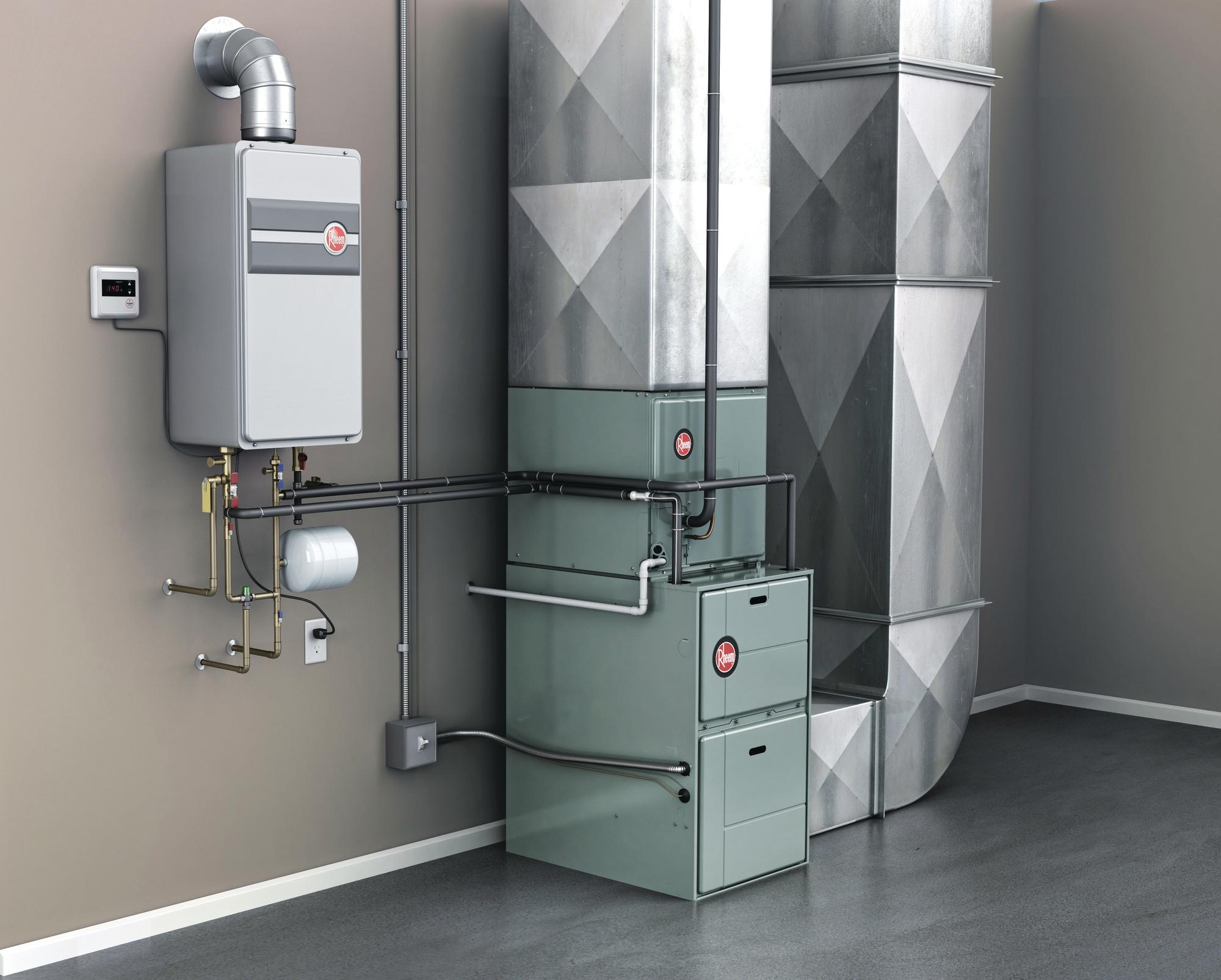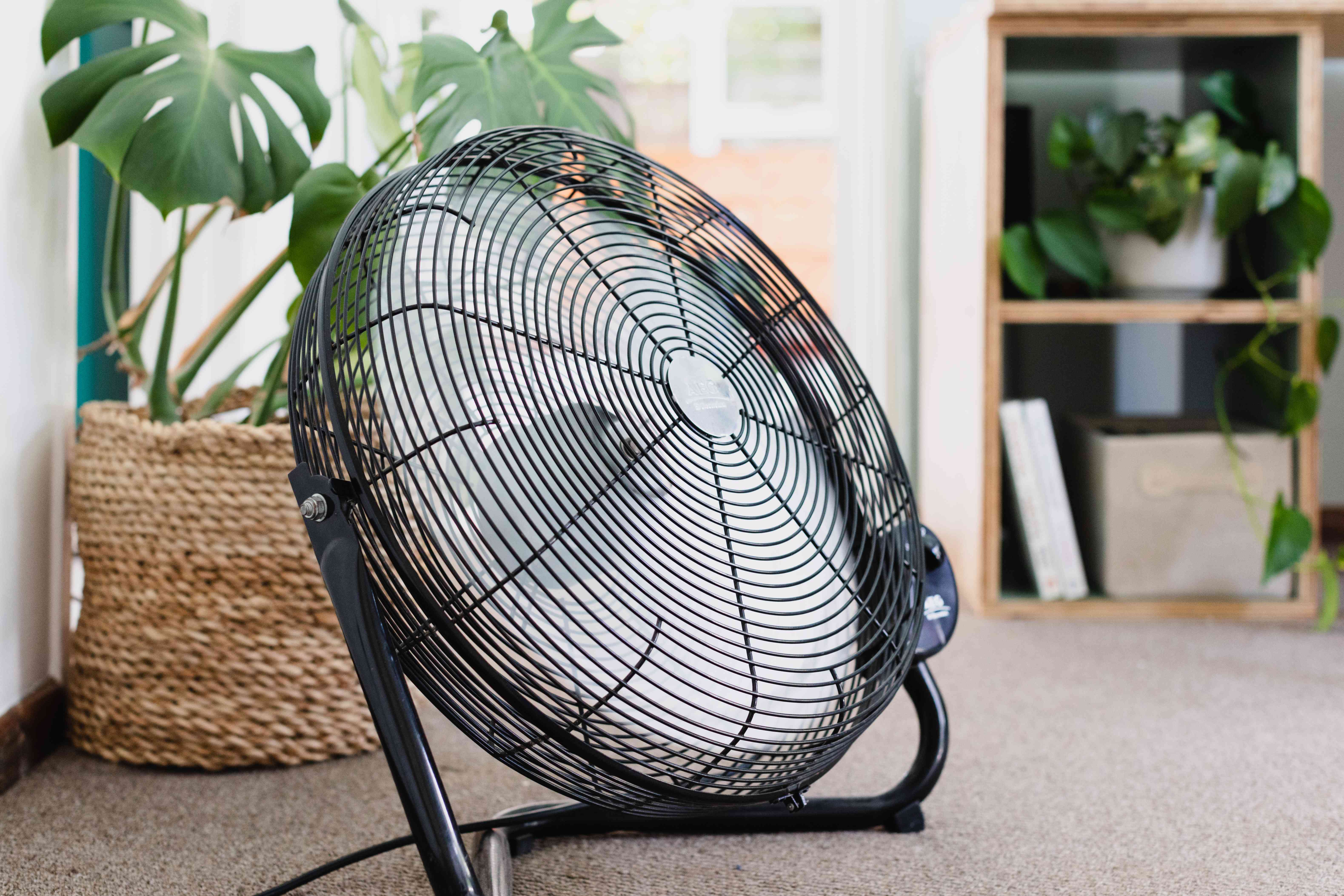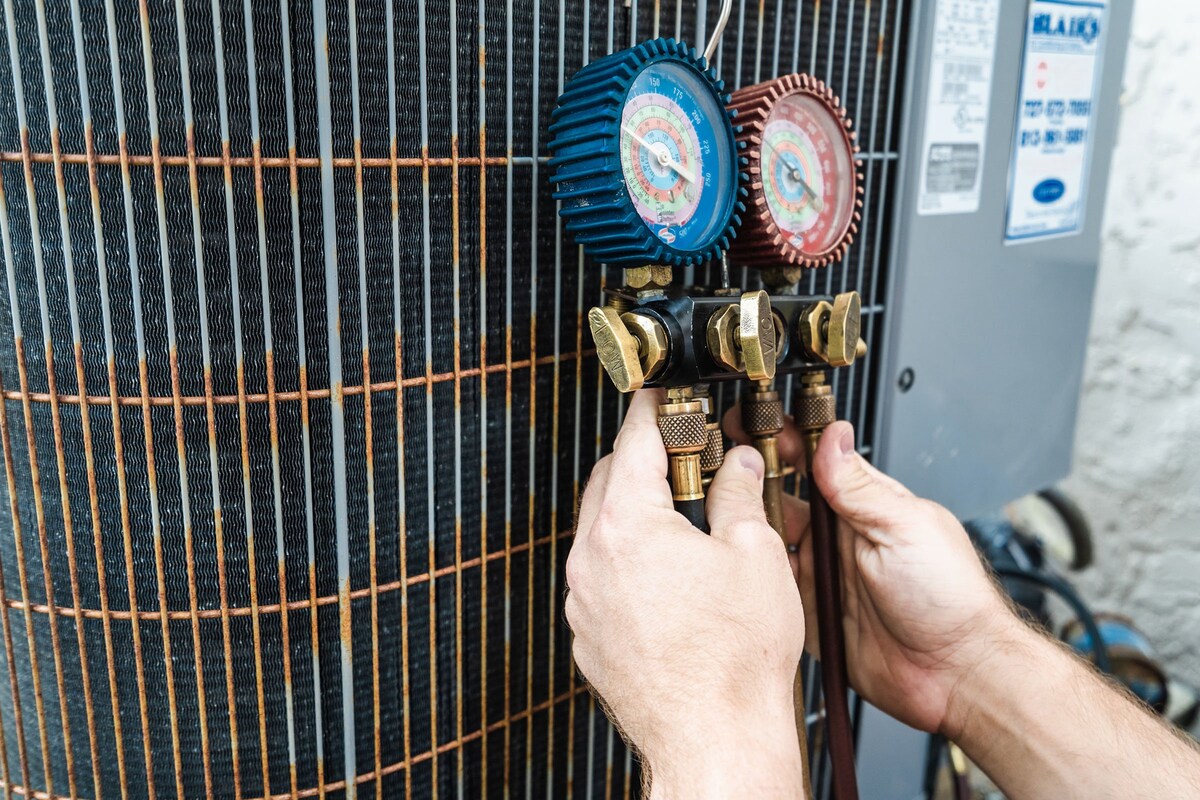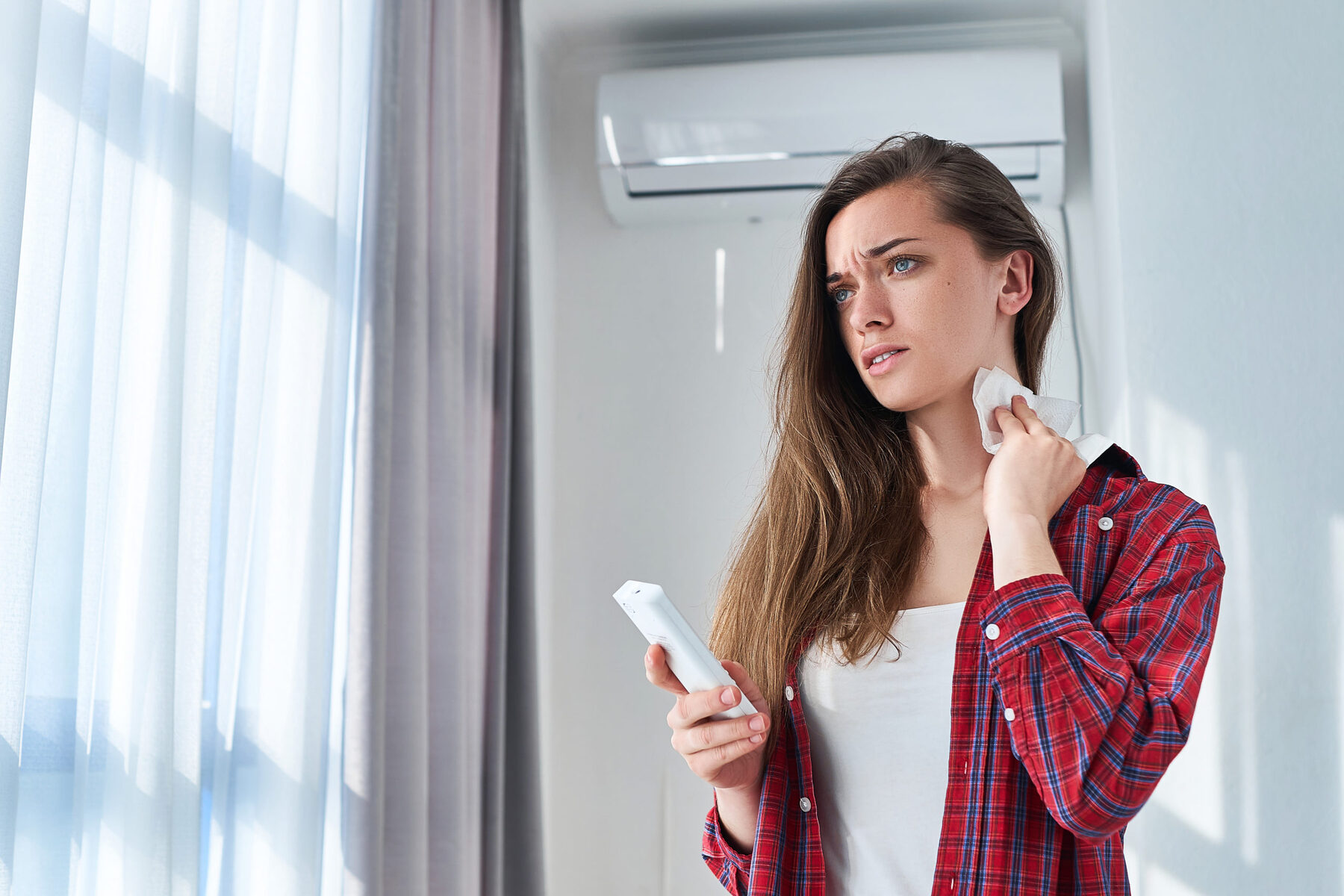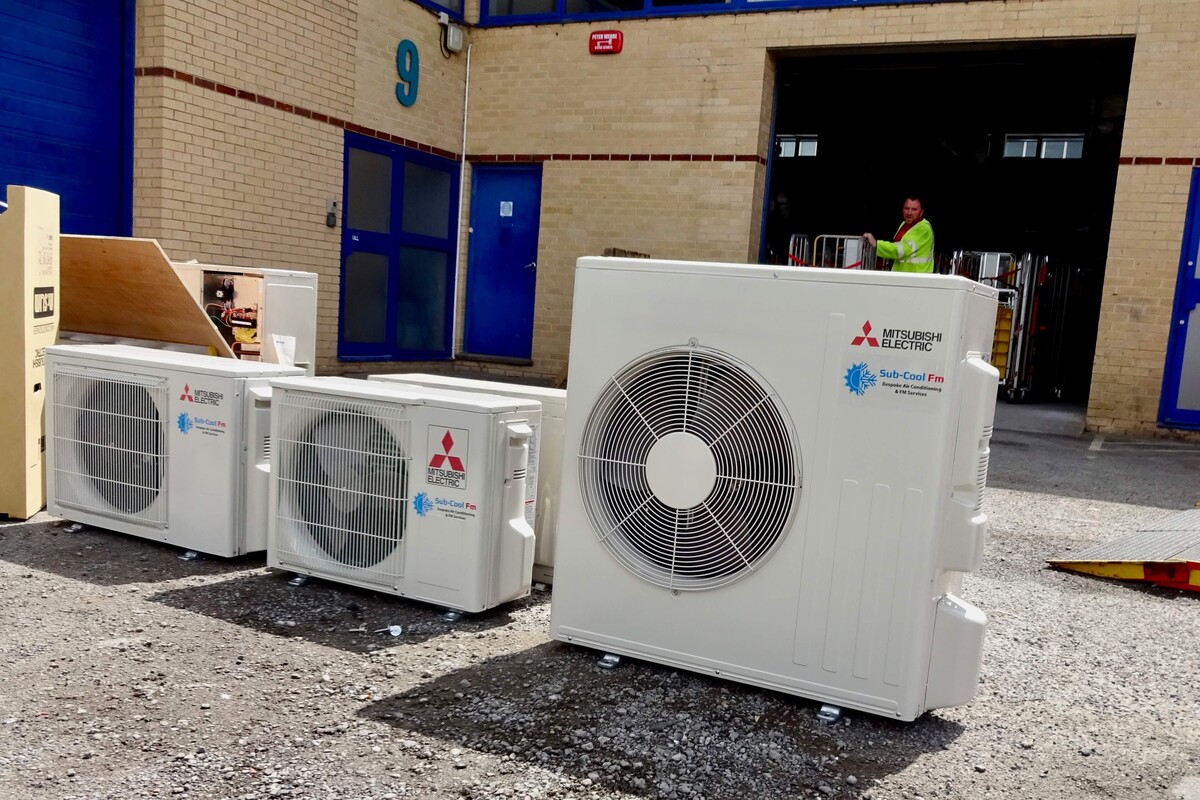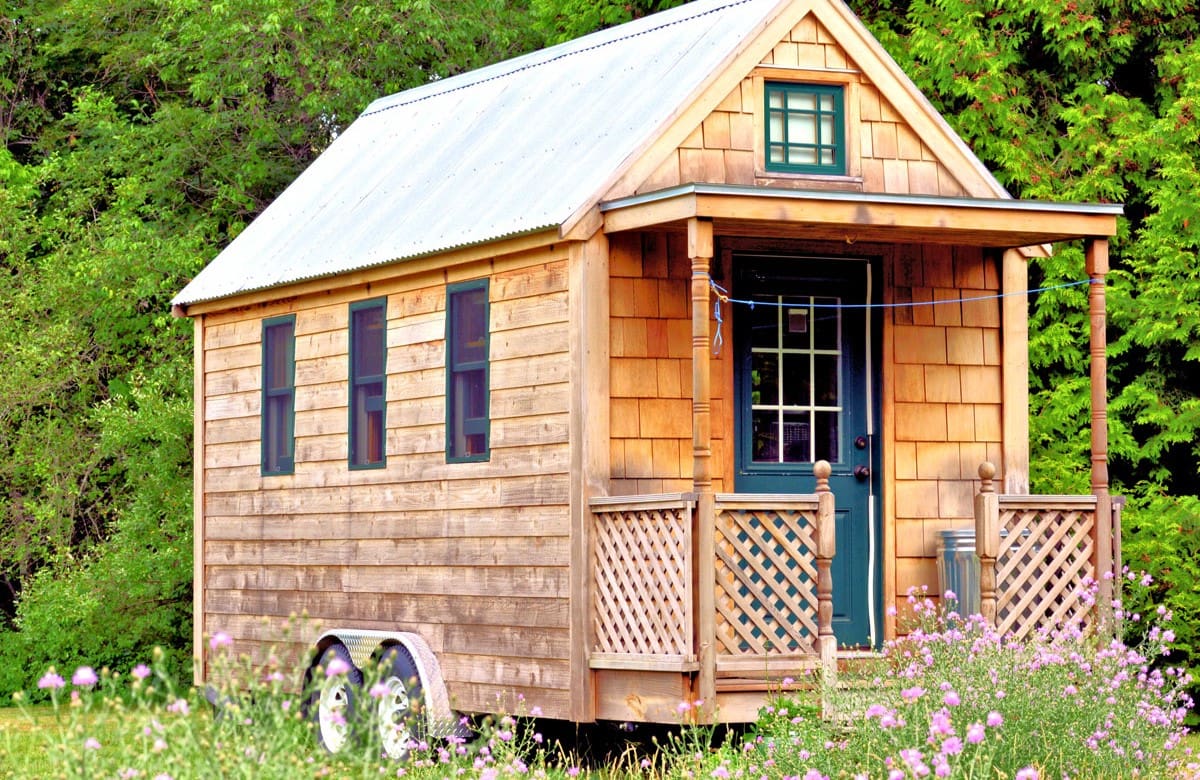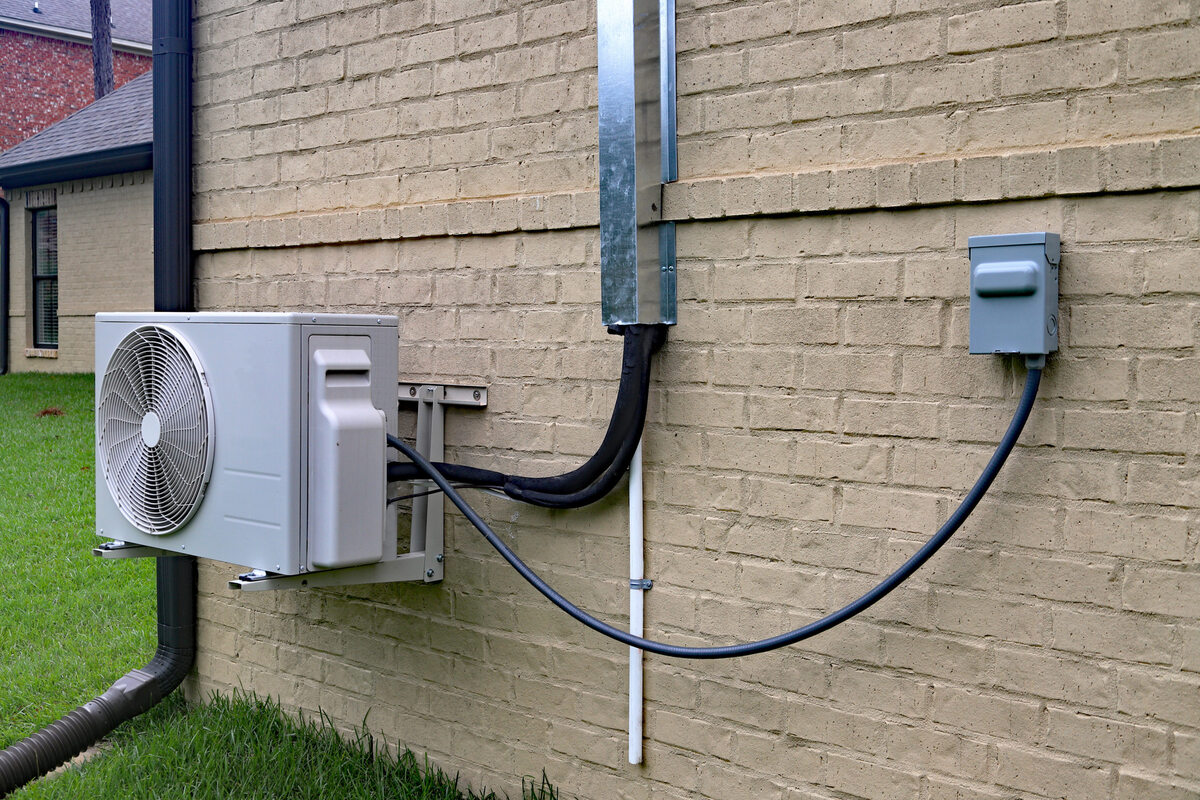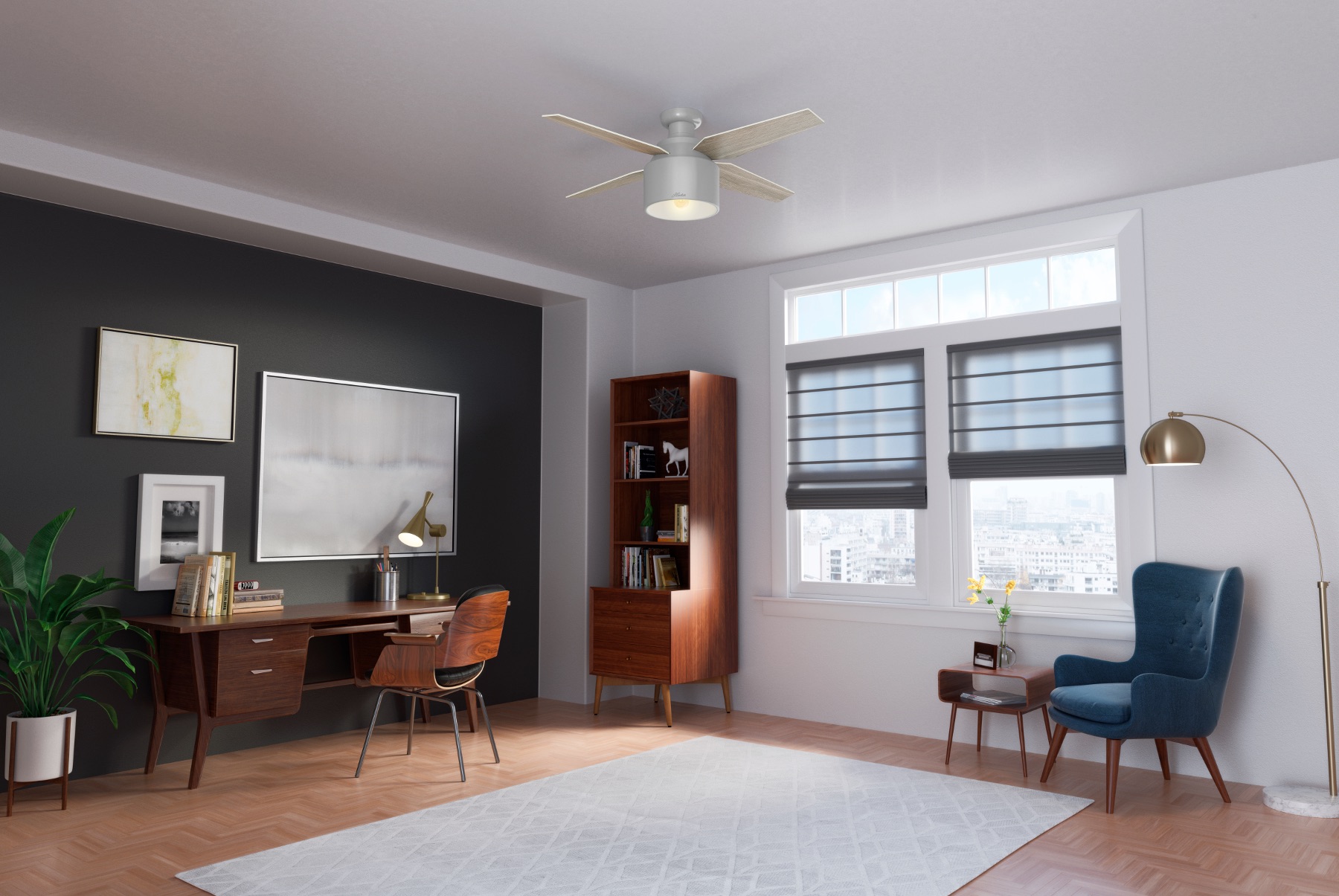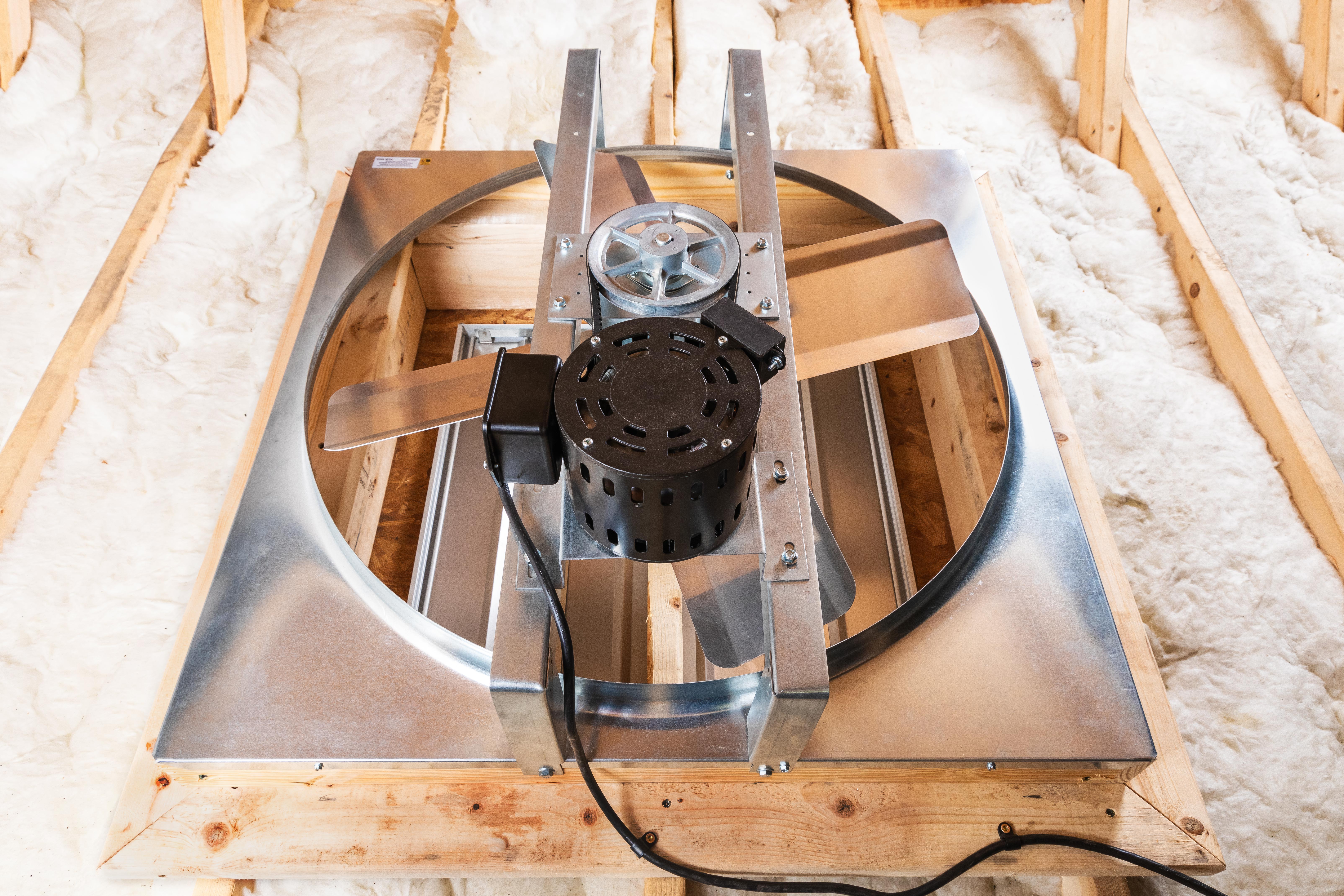Home>Home Maintenance>How To Keep A House Cool Without Air Conditioning
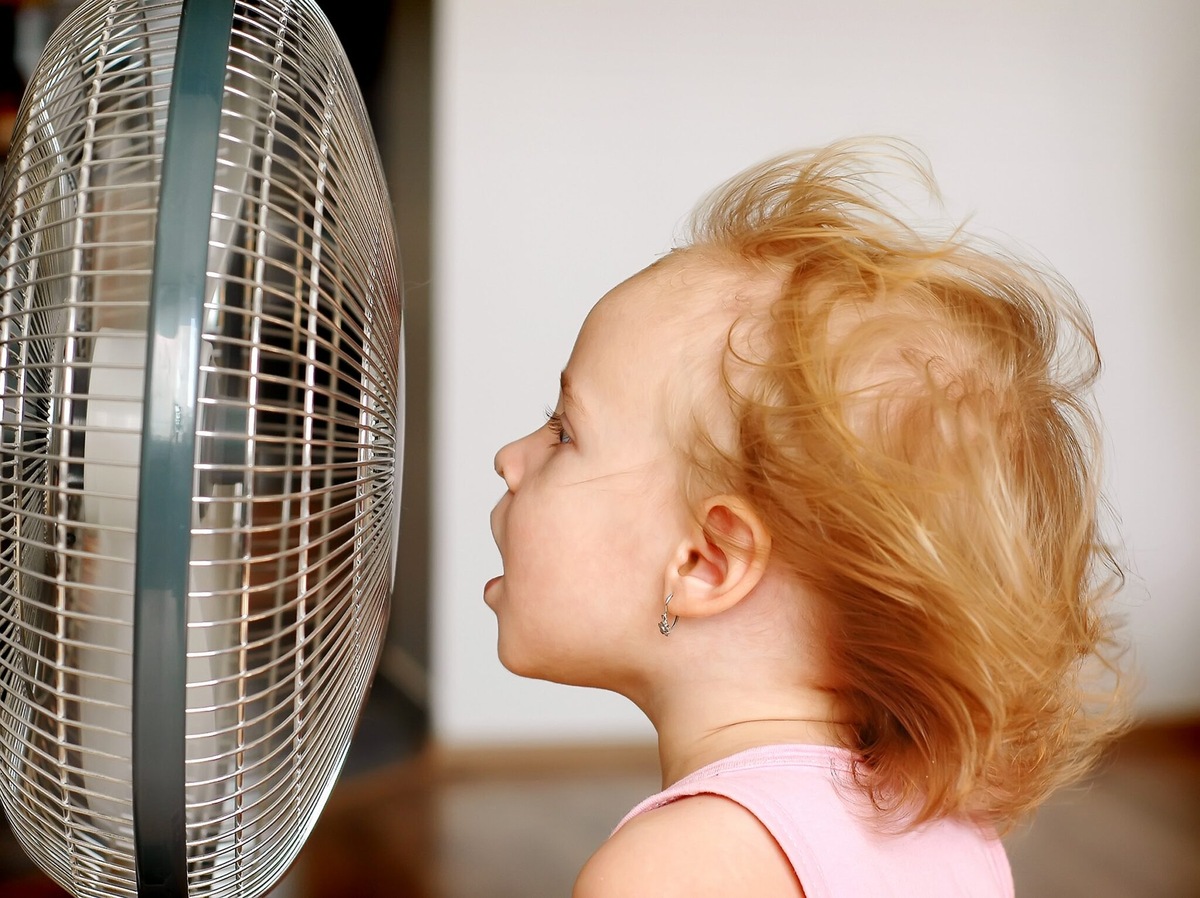

Home Maintenance
How To Keep A House Cool Without Air Conditioning
Modified: March 6, 2024
Discover effective ways to keep your house cool without relying on air conditioning. Learn smart home maintenance tips for a comfortable living environment.
(Many of the links in this article redirect to a specific reviewed product. Your purchase of these products through affiliate links helps to generate commission for Storables.com, at no extra cost. Learn more)
Introduction
Welcome to our comprehensive guide on how to keep a house cool without relying on air conditioning. As temperatures rise during the summer months, finding ways to keep our homes comfortable and cool becomes a top priority. While air conditioning can certainly do the job, it can also lead to higher energy bills and contribute to environmental concerns. Fortunately, there are a variety of techniques and strategies you can employ to maintain a cool and pleasant indoor environment naturally.
In this article, we will explore the importance of keeping a house cool without air conditioning and provide you with actionable tips on how to achieve this. By utilizing natural ventilation techniques, installing window coverings, insulating your home, incorporating shade and greenery, using fans effectively, managing indoor heat sources, and exploring smart home cooling solutions, you can create a refreshing and comfortable living space that doesn’t rely on air conditioning.
Not only will these methods help you save on energy costs, but they will also contribute to a more sustainable and environmentally-friendly home. So, whether you’re looking to reduce your carbon footprint or simply wanting to embrace a more natural approach to cooling, let’s dive in and discover how to keep your house cool without air conditioning!
Key Takeaways:
- You can keep your house cool without air conditioning by using natural ventilation, window coverings, insulation, shade, and fans. These methods are eco-friendly, cost-effective, and help reduce energy consumption.
- Smart home cooling solutions, such as smart thermostats, sensors, and automation, offer advanced ways to keep your house cool while maximizing energy efficiency. These technologies provide personalized comfort and contribute to a more sustainable lifestyle.
Importance of Keeping a House Cool without Air Conditioning
Keeping a house cool without relying heavily on air conditioning is not only beneficial for your wallet but also for the environment. Traditional air conditioning units consume a significant amount of energy, contributing to higher electricity bills and greenhouse gas emissions. By adopting alternative methods to keep your house cool, you can reduce your energy consumption and minimize your carbon footprint.
Additionally, air conditioning can create a dependency on artificial cooling, making it difficult to acclimate to natural temperature variations. Over-reliance on air conditioning can result in a reduced tolerance to heat, leading to discomfort when you are not in a cooled environment.
Moreover, air conditioning units require regular maintenance and can be expensive to install and repair. By exploring alternative cooling methods, you can save on maintenance costs and allocate your budget to other home improvement projects.
Another significant advantage of keeping a house cool without air conditioning is improved indoor air quality. Traditional air conditioning systems tend to recirculate the same air, which can trap pollutants and allergens, reducing the overall air quality. By utilizing natural cooling techniques, such as increased ventilation and reducing the use of artificial cooling, you can promote better air circulation and reduce the risk of respiratory issues.
Furthermore, natural cooling methods often promote a connection with the surrounding environment. By opening windows, using fans, and incorporating greenery and shade, you can enhance your connection to the outdoors and create a more rejuvenating and refreshing living space.
Lastly, by reducing your dependence on air conditioning, you can contribute to a decrease in overall energy demand. This can have a positive impact on the environment by reducing the need for fossil fuel burning power plants, which emit harmful greenhouse gases.
Overall, embracing alternative cooling methods not only offers numerous practical benefits such as cost savings and improved air quality but also allows us to embrace a sustainable and eco-friendly approach to keeping our houses cool. So, let’s explore these methods in more detail and discover how to maintain a comfortable and refreshing indoor environment without relying solely on air conditioning.
Utilizing Natural Ventilation Techniques
Natural ventilation is a cost-effective and eco-friendly method of cooling your house by utilizing natural airflow. By strategically opening windows and using cross-ventilation techniques, you can promote the circulation of fresh air and remove stagnant or hot air from your home.
One of the simplest ways to utilize natural ventilation is by opening windows strategically. Identify the cooler areas of your house and open windows in those locations to allow fresh air to enter. You can also create a cross-ventilation effect by opening windows on opposite sides of your home or in different rooms, which will encourage a flow of air throughout the space.
In addition to opening windows, using vent fans can enhance natural ventilation. Place fans near open windows to direct fresh air inside and expel warm air from your home. Ceiling fans are also effective in improving airflow and helping to keep the space cool. Ensure that your ceiling fans are set to rotate counterclockwise during the summer months to create a cooling breeze.
Another natural ventilation technique is to use outdoor breezeways. These are open areas or structurally designed corridors that allow air to circulate between rooms or sections of your house. By creating openings or installing vents in walls or on opposite sides of the house, you can facilitate the flow of cool air through these breezeways.
Furthermore, utilizing window design can help enhance natural ventilation. Installing windows with adjustable or operable vents, such as casement or awning windows, allows you to control the amount and direction of airflow. You can also consider installing skylights or roof vents to enable hot air to escape from your home.
Don’t forget to take advantage of cooler outdoor temperatures during the evening and early morning hours. Open windows during these times to allow the cool breeze to naturally cool down your living space. Be sure to close windows as the temperature rises during the day to prevent warm air from entering.
By incorporating these natural ventilation techniques, you can harness the power of fresh air to keep your house cool and comfortable. Not only will you reduce your reliance on air conditioning, but you’ll also enjoy the benefits of improved indoor air quality and a closer connection to nature.
Installing and Using Window Coverings
Window coverings play a crucial role in keeping your house cool by preventing sunlight from entering and heating up the space. By installing and using the right window coverings, you can effectively block out heat and reduce the need for air conditioning.
Start by investing in blinds or shades that are specifically designed to block out sunlight. Look for options with a high solar heat gain coefficient (SHGC) rating, as this indicates their effectiveness in blocking heat from entering your home. Honeycomb or cellular shades, for example, are great choices as they have insulating properties that can help keep your house cool in the summer.
Curtains and draperies are also effective in blocking out sunlight and reducing heat gain. Choose curtains made from light-colored, tightly woven fabrics that can reflect sunlight. Additionally, consider adding a thermal lining to your curtains to boost their insulating properties.
When it comes to using your window coverings, it’s important to be strategic. Keep your blinds, shades, curtains, or draperies closed during the hottest parts of the day, especially on windows that receive direct sunlight. This will help prevent the heat from entering your home and keep the indoor temperature lower.
If you want to utilize natural light and ventilation while still blocking out heat, consider installing window films or tinted glass. These options provide an additional layer of sun protection that can help keep your house cool. Window films and tinted glass can also help reduce glare and protect your furnishings from fading due to UV radiation.
Another innovative solution is to install exterior shading devices such as awnings, shutters, or blinds. These can be strategically positioned to block direct sunlight from entering your home and heating up the interior. Exterior shading devices are particularly effective in homes with large windows or patio doors.
Remember to adjust your window coverings as the sun’s position changes throughout the day. Open them in the early morning and evening to allow for natural light and ventilation while keeping them closed during peak sunlight hours.
By installing window coverings designed to block out sunlight and using them strategically, you can effectively reduce heat gain and maintain a cooler indoor environment. This not only reduces the need for air conditioning but also helps to preserve energy and lower your utility bills.
Insulating the House
Proper insulation is key to keeping your house cool by preventing heat transfer from the outside. By effectively insulating your home, you can create a barrier that helps maintain a consistent indoor temperature and reduces the need for artificial cooling.
Start by checking the insulation in your attic. The attic is often the main source of heat gain in a house, as hot air rises and can seep into the living spaces below. Ensure that your attic insulation is adequate and in good condition. Consider adding additional insulation if needed, especially if you live in a region with hot summers. Fiberglass, cellulose, or spray foam insulation are common options for attics.
Windows and doors can also be sources of heat gain. Check for gaps, cracks, or air leaks around these openings, as they can allow warm air to seep in and cool air to escape. Use weatherstripping or caulking to seal any gaps and ensure a tight seal. Additionally, consider adding window films or tinted glass to further reduce heat transfer through windows.
Wall insulation is another effective way to keep your house cool. While it may be more challenging to add insulation to existing walls, if you’re undergoing renovations, it’s an opportune time to consider it. Insulated wall panels or blown-in insulation can be used to improve the thermal performance of your walls. For new constructions, opt for materials with high insulation values, such as insulated concrete forms (ICFs) or structural insulated panels (SIPs).
Don’t forget about insulating your floors and crawlspaces. Insulating these areas can help ensure that cool air remains inside your home and that heat from the ground doesn’t transfer indoors. Use insulation materials suited for damp environments, such as rigid foam boards or spray foam insulation.
Roof insulation is crucial for preventing heat buildup in your house. In hot climates, consider using materials with high reflectivity, such as cool roof tiles or coatings, to reduce the absorption of sunlight. For sloped roofs, you can install reflective roof barriers under the roof covering to further reduce heat transfer.
By insulating your home effectively, you can significantly reduce heat gain and create a more comfortable living environment. Proper insulation helps maintain a consistent indoor temperature and reduces the need for air conditioning, thereby lowering your energy consumption and utility bills.
Use fans strategically to create a cross breeze by placing them in windows and doorways. Close curtains and blinds during the hottest part of the day to block out the sun’s heat.
Read more: How To Sleep Without Air Conditioning
Incorporating Shade and Greenery
Creating shade and incorporating greenery in and around your house can significantly contribute to keeping it cool during hot summer months. The strategic placement of shade structures and the addition of plants can help reduce heat intensity, provide natural cooling, and create a more pleasant outdoor and indoor environment.
One effective way to incorporate shade is by adding awnings or overhangs to windows, doors, and patio areas. These structures block direct sunlight from entering your home and can reduce heat gain. Choose materials that provide good shade coverage while allowing for proper ventilation.
Trees and shrubs also play a vital role in providing natural shade and cooling. Planting trees strategically around your house can create a natural canopy that helps reduce solar heat gain. Deciduous trees are particularly beneficial, as they provide shade during the summer while allowing sunlight to filter through during the winter when the leaves fall.
When selecting trees for shade, consider their size at maturity, their proximity to your house, and the specific climate of your area. Opt for trees that provide a dense, spreading canopy with broad leaves. Position trees on the south and west sides of your house to block the most intense sunlight.
In addition to trees, install trellises, pergolas, or other shade structures near windows or outdoor areas. These structures can support climbing plants, such as vines or ivy, which provide additional shade. Choose plants that are adapted to your climate and require minimal maintenance.
Another effective way to incorporate shade is by using outdoor umbrellas or sun sails in patio areas. These portable shade options can be adjusted to block direct sunlight and create a cooler outdoor space for relaxation or entertaining.
Inside your home, consider using light-colored window treatments that provide privacy while still allowing some natural light to filter in. Light-colored curtains, blinds, or shades can reflect sunlight and reduce heat absorption. Additionally, choose materials that have thermal insulation properties to further enhance their cooling effect.
By incorporating shade structures and greenery, you can significantly reduce the heat impact on your home. The shade from trees and other structures helps to block direct sunlight, while plants contribute to cooling through evapotranspiration. Creating a naturally shaded environment not only keeps your house cool but also enhances the aesthetics and overall comfort of your outdoor and indoor spaces.
Using Fans and Ceiling Fans Effectively
Fans are an excellent and energy-efficient way to keep your house cool without relying heavily on air conditioning. By using fans strategically and incorporating ceiling fans, you can create a comfortable indoor environment and improve air circulation.
When it comes to using fans effectively, one key tip is to place them strategically throughout your home. Set up portable fans in areas where you spend the most time, such as living rooms, bedrooms, or home offices. Position the fans near windows or doors to draw in fresh air from outside and create a cooling breeze.
Additionally, consider using window fans to facilitate cross-ventilation. These fans are designed to fit into windows and can be adjusted to pull cool air in from one side of your house and expel warm air out from the other side. Window fans are especially effective during the cooler parts of the day when outdoor temperatures are lower.
Ceiling fans are also a valuable asset in maintaining a cool indoor atmosphere. They create a gentle breeze, which can make you feel cooler due to the wind chill effect. During the summer months, make sure your ceiling fans are set to rotate counterclockwise. This creates a downward airflow that creates a cooling effect on your skin.
It’s worth noting that fans cool people, not rooms. Remember to turn off fans when you leave a room to conserve energy. Fans are most effective when used in occupied areas, so utilize them when you’re in the room and turn them off when you’re not.
If you’re using an air conditioner, combining it with fans can enhance its efficiency and distribution of cool air. Position fans strategically to help circulate the cool air throughout the room and reduce reliance on the air conditioner. This method allows you to set the air conditioner at a slightly higher temperature while still feeling comfortable.
As fans don’t lower the room temperature, it’s important to manage heat sources effectively. Turn off lights when not in use as they generate heat. Use energy-efficient light bulbs that produce less heat. Consider using a dehumidifier in high-humidity areas, as excessive moisture can make a room feel warmer.
Lastly, make the most of natural breezes by opening windows and using fans to bring in fresh air. During cooler evenings and early mornings, take advantage of natural ventilation to let the cool breeze flow through your home.
By utilizing fans strategically and incorporating ceiling fans, you can improve air circulation, create a cooling effect, and reduce the need for air conditioning. Fans are an energy-efficient way to maintain a comfortable indoor environment and can significantly contribute to keeping your house cool.
Managing Indoor Heat Sources
Managing indoor heat sources is essential in keeping your house cool without relying heavily on air conditioning. By identifying and mitigating heat-generating factors, you can minimize the amount of heat that enters your home and maintain a comfortable indoor environment.
One of the primary sources of indoor heat is sunlight entering through windows. To minimize this, consider using reflective window films or UV-blocking coatings on your windows. These treatments can help reduce the amount of heat and sunlight that penetrates your home. Adding awnings or installing blinds or shades that block out sunlight can further reduce heat gain.
Appliances and electronics can also generate heat, so it’s important to manage their usage. Avoid using heat-generating appliances, such as the oven or stove, during the hottest parts of the day. Instead, opt for alternative cooking methods like grilling outdoors or using a slow cooker. Additionally, unplug electronic devices when not in use to prevent them from producing unnecessary heat.
Incandescent light bulbs are known to generate a significant amount of heat. Consider replacing them with energy-efficient LED or CFL bulbs, which not only consume less energy but also produce less heat. This simple switch can make a noticeable difference in keeping your home cooler.
Proper ventilation is crucial in managing indoor heat. Ensure that your home is well-ventilated by opening windows and using fans to promote air circulation. Exhaust fans in kitchens and bathrooms can also help remove hot air and excess moisture, reducing the heat and humidity inside your home.
Insulation plays a significant role in managing indoor heat sources. Properly insulate your home to prevent heat transfer from outside and maintain a consistent indoor temperature. Insulated walls, attic, floors, and windows help to keep the cool air inside and prevent outside heat from infiltrating your living spaces.
If you have a central cooling system, ensure that it is well-maintained. Regularly clean or replace air filters to ensure optimum airflow and efficiency. A clean and well-functioning cooling system will help remove heat from your home effectively.
Lastly, be mindful of your daily activities that can generate heat indoors. For example, taking hot showers or running the dishwasher can increase the temperature and humidity in your home. Consider taking shorter, cooler showers and using the dishwasher during cooler times of the day to minimize their impact on indoor heat levels.
By effectively managing indoor heat sources, you can significantly reduce heat gain in your home and create a more comfortable indoor environment without relying heavily on air conditioning. Implementing these strategies will not only help keep your house cool but also contribute to energy savings and a more sustainable lifestyle.
Smart Home Cooling Solutions
Smart home cooling solutions offer a technologically advanced approach to keeping your house cool while maximizing energy efficiency. By integrating smart devices and automation, you can optimize your cooling system, enhance comfort, and reduce energy consumption.
Smart thermostats are at the forefront of smart home cooling solutions. These intelligent devices allow you to control and schedule your cooling system remotely through a smartphone app or voice commands. Smart thermostats learn your preferences and adjust the temperature accordingly, ensuring that your home stays comfortable while minimizing energy wastage. Some models can even detect when you’re away from home and adjust the temperature to save energy.
Pairing your smart thermostat with smart sensors throughout your home can further enhance energy efficiency and comfort. These sensors can detect occupancy and adjust cooling levels accordingly, ensuring that you’re only cooling occupied areas of your house. By integrating sensors with your smart thermostat, you can create personalized cooling zones and optimize energy usage.
Smart vents are another innovative solution that can be integrated into a smart home cooling system. These vents can open and close automatically based on temperature and occupancy, redirecting airflow to specific areas of your home. By intelligently managing airflow, smart vents help balance the temperature and maintain a comfortable environment throughout your house.
Additionally, consider utilizing smart fans and ceiling fans that can be controlled remotely. These devices allow you to adjust fan speed and direction through a smartphone app or smart home hub. By utilizing smart fans, you can create a cooling airflow in specific rooms or areas without the need for constant manual adjustment.
Smart home automation systems, such as those powered by voice assistants like Alexa or Google Assistant, can also be used to control various cooling devices. By integrating your smart thermostat, fans, and other cooling devices into a cohesive system, you can control them with voice commands or create customized cooling routines that suit your preferences.
Utilizing smart shades or blinds can also contribute to effective smart home cooling. These devices can be programmed to automatically close during the hottest parts of the day, preventing sunlight from entering your home and reducing heat gain. Similarly, smart windows with built-in thermal control can adjust their opacity to block out sunlight and regulate indoor temperature.
Lastly, data analysis and machine learning algorithms can optimize your smart home cooling system. These systems can analyze data such as weather forecasts, occupancy patterns, and temperature preferences to automatically adjust cooling settings for maximum comfort and energy efficiency.
By embracing smart home cooling solutions, you can enjoy the benefits of convenience, customization, and energy savings. These innovative technologies allow you to create a comfortable and cool living environment while minimizing your environmental impact and reducing energy consumption.
Conclusion
Keeping a house cool without relying heavily on air conditioning is not only beneficial for your wallet but also for the environment. By implementing a combination of natural cooling techniques, effective management of heat sources, and smart home cooling solutions, you can create a comfortable and energy-efficient living environment.
Utilizing natural ventilation techniques, such as opening windows strategically, using vent fans, and incorporating outdoor breezeways, allows you to harness fresh air and promote airflow throughout your home. Installing and using window coverings, like blinds, shades, and curtains, helps block out sunlight and reduce heat gain.
Proper insulation of your home, including the attic, walls, floors, and roof, provides a barrier against heat transfer and helps maintain a consistent indoor temperature. Incorporating shade and greenery through the use of trees, awnings, and outdoor shading devices not only blocks direct sunlight but also enhances the aesthetics of your outdoor space.
Using fans and ceiling fans effectively improves air circulation, creates a cooling breeze, and reduces the need for air conditioning. Managing indoor heat sources, such as sunlight entering through windows, heat-generating appliances, and proper ventilation, helps minimize heat gain and maintain a comfortable indoor environment.
Exploring smart home cooling solutions, such as smart thermostats, sensors, smart vents, and automation systems, allows for personalized and energy-efficient control of your cooling system. These technologically advanced solutions optimize energy usage, enhance comfort, and contribute to a more sustainable lifestyle.
In conclusion, by combining these strategies and techniques, you can effectively keep your house cool without relying heavily on air conditioning. Not only will you save on energy costs and reduce your carbon footprint, but you will also create a comfortable and refreshing living space for you and your family.
Remember, embracing a natural and smart approach to cooling not only benefits your home but also contributes to a healthier planet. So, start implementing these cooling methods today and enjoy the many benefits of a cool and sustainable living environment.
Frequently Asked Questions about How To Keep A House Cool Without Air Conditioning
Was this page helpful?
At Storables.com, we guarantee accurate and reliable information. Our content, validated by Expert Board Contributors, is crafted following stringent Editorial Policies. We're committed to providing you with well-researched, expert-backed insights for all your informational needs.
